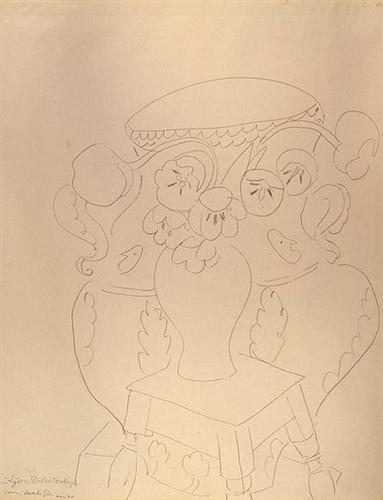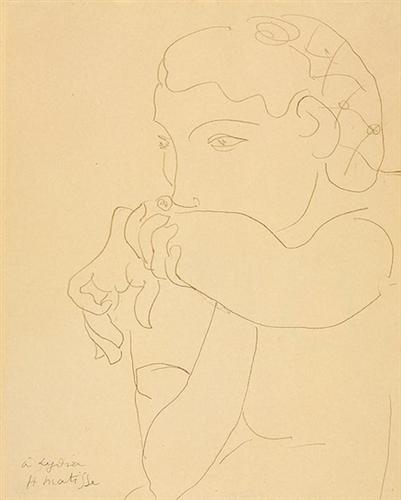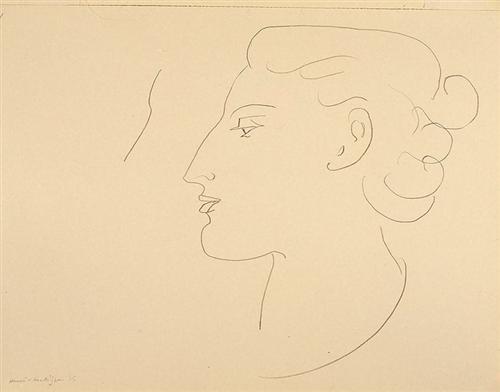Think of a outline drawing as the scaffolding of a piece. The things to hold it together to help you reach your goals. An outline drawing at it's most basic does away with the complexity of a value scale, while maintaining the complexity of hand-eye coordination.
It can sometimes help to imagine outline drawings as coloring book pages. Let's start simple:
There
is no indication of value here; it is as flat as the paper it's drawn
on. That's essentially what a outline drawing is. It should look like a
two dimensional object. Let's get a bit more complex:
Still
a relatively simple piece, but with a few changes. The subjects are more detailed and have a wider range of line widths and overlapping
figures--all things that give it a more 3 dimensional appearance. Though
more complex and detailed than the above flowers, this is still
essentially a outline drawing. Let's move on to more relevant examples with a still life by Henry Matisse:
A few other more simple Matisse outline drawings:
Notice the similarities between all four pieces: the lack of shading
and fine details. All the subjects have been simplified to their most basic outline.
An
outline shouldn't be perfect and you shouldn't feel the need to erase
your 'mistakes'. Just draw what you see in front of you. It's all about
training your hand eye coordination.





No comments:
Post a Comment